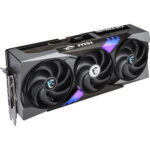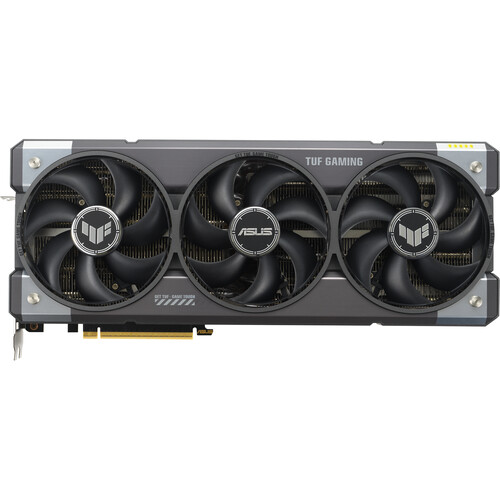ASUS GeForce RTX 5090 TUF GAMING OC Graphics Card
Lead Time 7–9 days
- 21,760 CUDA Cores
- Blackwell Architecture
- 32GB of GDDR7 VRAM
- 512-Bit Memory Interface
- 28 GB/s Memory Speed
- DisplayPort 2.1b | HDMI 2.1b
- PCIe 5.0 x16 Interface
- Indirect Aura Sync RGB Lighting
- Axial-Tech Triple Fan Cooling
- Vapor Chamber
Payment options
- Bank transfer
Delivery options
- Pickup
- National Delivery
- International
Request a tailored price quote
Enter your details below
A sales representative will contact you within 24 hours.
ASUS RTX 5090 OC Edition Overview
Based on the Blackwell architecture, the ASUS GeForce RTX 5090 TUF GAMING OC Graphics Card brings the power of real-time ray tracing and AI to your PC games. The GPU features 32GB of GDDR7 VRAM and a 512-bit memory interface, offering improved performance over the previous Ada Lovelace-based generation. Lock, load, and dominate with TUF GAMING OC, which is built to last and deliver optimal performance.
The front panel of the card features a variety of outputs, such as DisplayPort 2.1b and HDMI 2.1b. The RTX 5090 is not just about high-resolution gaming. Computationally intensive programs can utilize the GPU’s 21,760 cores to accelerate tasks using CUDA and other APIs.
Triple Axial-Tech Fan Cooling
When it comes to cooling, the TUF GAMING OC features triple Axial-tech alternate-spinning fans for enhanced airflow.
This advanced cooling design features the ASUS-exclusive MaxContact manufacturing technique, a phase-change GPU thermal pad and efficient Axial-tech fans, helping to ensure premium thermal performance, optimized airflow and quiet operation, all within a robust and vented metal exoskeleton.
Powerful AI Performance
The GeForce RTX 50- Series GPUs can create generative AI models at twice the speed of the previous generation with a smaller memory footprint, enabling powerful video editing, 3D rendering, and design tools.
You can render large 3D scenes in real-time and create complex animations with ray tracing using compatible GPU-accelerated applications such as Autodesk 3ds Max, Maya, Maxon Cinema 4D, and Blender. Visualize photorealistic materials as you create them and experience near lag-free interaction in addition to using tools such as AI-enhanced denoising and frame-boosting with DLSS 3.




